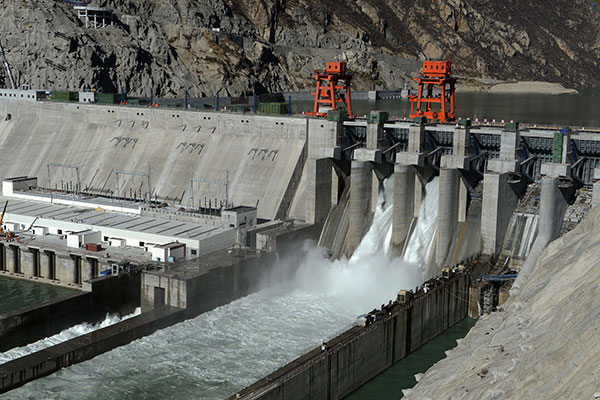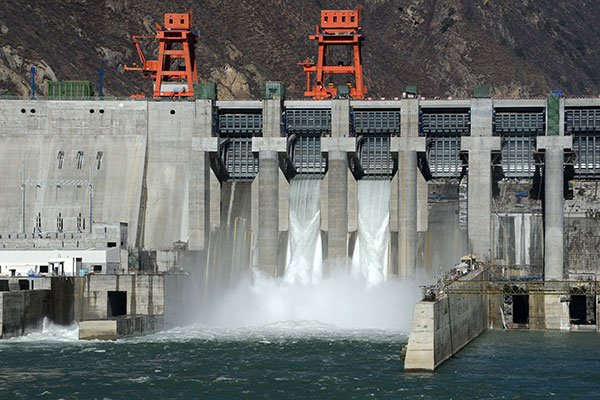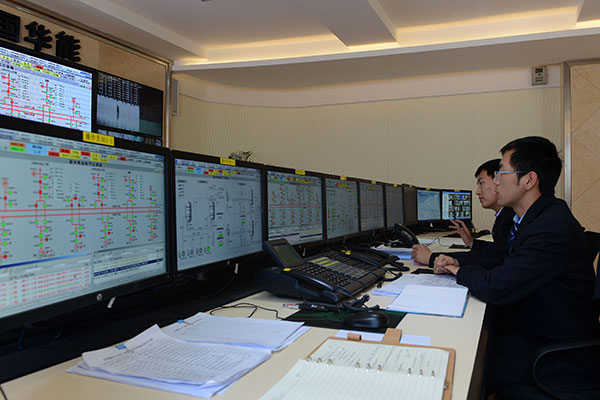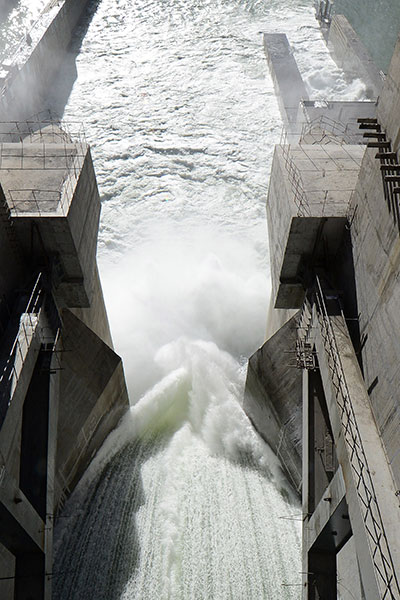
Water is discharged from the dam of Zangmu Hydropower Station in Gyaca county, Shannan prefecture, Southwest China’s Tibet autonomous region, Nov 22, 2014. This Tibet’s largest hydropower station became partly operational on Nov 23, harnessing the rich water resources of the Yarlung Zangbo River to empower the development of the electricity-strapped region. [Photo/Xinhua]
LHASA — Tibet’s largest hydropower station became partly operational on Nov 23, harnessing the rich water resources of the Yarlung Zangbo River to develop the electricity-strapped region.
The first generating unit of the 9.6 billion yuan ($1.5 billion) Zangmu Hydropower Station, which is positioned over 3,300 meters above sea level on the “roof of the world”, went into operation on Nov 23 with five other generating units due for completion no later than next year.
The huge project, which straddles the middle reaches of the roaring Yarlung Zangbo River, will have a total installed capacity of 510,000 kilowatts upon completion. It is designed to generate 2.5 billion kilowatt hours of electricity annually.
Official statistics show that Tibet’s per capita electricity consumption in 2013 was slightly over 1,000 kilowatt hours, less than one third of the national average.
“The hydropower station will solve Tibet’s power shortage, especially in the winter,” said Liu Xiaoming from the State Grid’s Tibet Electric Power Co.
According to Tibet’s development and reform commission, as of October 2014, the region’s installed power generating capacity was 1.48 million kilowatts.
Tibet has annual water resources totaling 448.2 billion cubic meters, with potential water power resources reaching 201.36 million kilowatts. It holds nearly 30 percent of the nation’s total water power resources.
“The hydroplant is a good example of clean energy development,” said chairman of the Tibetan regional government, Losang Jamcan, “Zangmu Hydropower Station will address Tibet’s power shortage.”

Water is discharged from the dam of Zangmu Hydropower Station in Gyaca county, Shannan prefecture, Southwest China’s Tibet autonomous region, Nov 22, 2014. This Tibet’s largest hydropower station became partly operational on Nov 23, harnessing the rich water resources of the Yarlung Zangbo River to empower the development of the electricity-strapped region. [Photo/Xinhua]

Staff members work at the control center in Zangmu Hydropower Station in Gyaca county, Shannan prefecture, Southwest China’s Tibet autonomous region, Nov 22, 2014. This Tibet’s largest hydropower station became partly operational on Nov 23, harnessing the rich water resources of the Yarlung Zangbo River to empower the development of the electricity-strapped region. [Photo/Xinhua]

Water is discharged from the dam of Zangmu Hydropower Station in Gyaca county, Shannan prefecture, Southwest China’s Tibet autonomous region, Nov 22, 2014. This Tibet’s largest hydropower station became partly operational on Nov 23, harnessing the rich water resources of the Yarlung Zangbo River to empower the development of the electricity-strapped region. [Photo/Xinhua]
